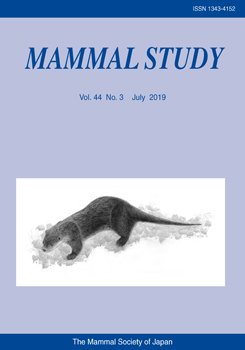We investigated the genetic structure among populations of the Ryukyu wild boar (Sus scrofa riukiuanus) on Tokunoshima Island by analyzing DNA from modern and archaeological samples. Four and two mtDNA haplotypes were found in the modern and archaeological samples, respectively. One haplotype was shared between the modern and archaeological samples. Of the seven haplotypes, four were only found on Tokunoshima. These haplotypes were genetically close to each other and classified as those from the Ryukyu wild boars. This genetic similarity between modern and archaeological samples suggests that these four haplotypes originated from Tokunoshima. The chronology of the archaeological samples suggests that the genetic structure of the wild boar population on Tokunoshima has been maintained for over 1000 years. The representative glucosephosphate isomerase-processed pseudogene (GPIP) allele for the modern population on Tokunoshima was GPIP*3a and was found in a Ryukyu wild boar in a previous study. We detected three modern individuals that were genetically distinct from the Ryukyu wild boars based on mtDNA and GPIP analyses. They all had a different combination of the mtDNA haplotype and GPIP allele from each other. Our results indicate that gene flow events from pigs to wild boars have occurred on Tokunoshima.
How to translate text using browser tools
22 May 2019
Genetic Structure of the Ryukyu Wild Boar Population on Tokunoshima Island (Japan) Based on Modern and Ancient DNA Analyses: Evidence of Recent Gene Flow from Pigs to Wild Boars
Ryohei Takahashi,
Ryo Gushiken,
Ken Nagata,
Akito Shinzato,
Sachi Sri Kantha,
Mirai Yasuda
ACCESS THE FULL ARTICLE

Mammal Study
Vol. 44 • No. 3
July 2019
Vol. 44 • No. 3
July 2019
GPIP
Inobuta
mtDNA
PREHISTORY




